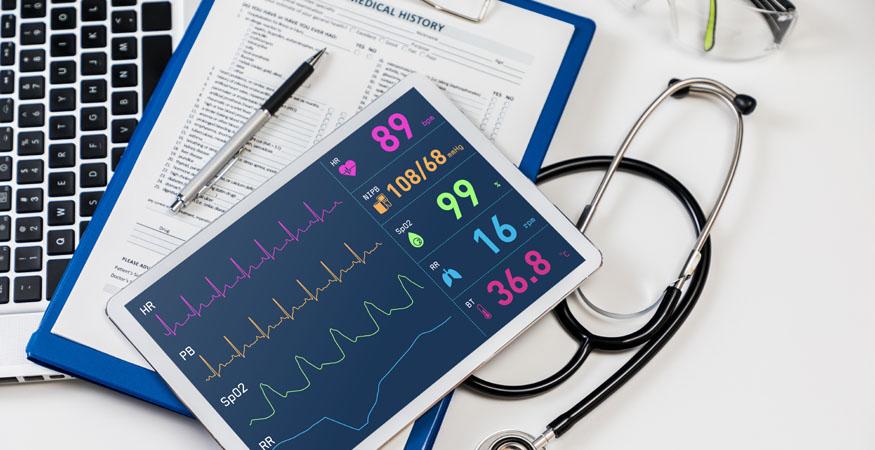The global healthcare interoperability solution market is expected to grow from $3.85 billion in 2022 to $6.4 billion in 2026.
Healthcare organizations are increasingly searching for opportunities to improve the interoperability of their systems. When implemented correctly, interoperability allows two or more application systems to exchange information and use the information once it is received.
Enterprise Content Management (ECM), at its core, is a versatile document management system that enables interoperability by involving the capture, storage, modification and sharing of physical files within an organization.
Many organizations have used ECM to improve their interoperability, including school districts, auto dealerships and healthcare organizations.
The journey toward digital transformation can look slightly different between organizations. But overall, organizations achieve their goal of interoperability by moving from paper documents to searchable electronic data.
RELATED ARTICLE: 5 Benefits of Document Automation for Healthcare
The Digital Transformation Model
A common process that is often used to create a plan to improve interoperability, is a five step process called the digital transformation model.
The five steps in this model are:
- Digitize paper documents by scanning.
- Organize scanned documents into a hierarchical structure by indexing within a folder tree. In this manner, the documents will now be part of one comprehensive system, instead of multiple competing systems. This allows all of the documents to be accessible, simultaneously.
- Automate by capturing key pieces of data from the documents and indexing them. These key data pieces are often recognized as the data that staff most frequently searches. Examples of searchable data include document type, patient name and insurance information. In addition, it is also common, at this step, to update manual processes from paper-based to web-based forms.
- Streamline by creating a workflow process based on a series of steps. Be sure to include review and approval steps in your process.
- Transform the data by pushing it into an EHR system or another application. An example of how this is done in a healthcare setting would be to collect patient information in a web-based form and make it compatible with other applications commonly used by healthcare staff.
Benefits of ECM
There are many benefits to using ECM. Oftentimes, organizations are looking for ways to save resources and/or boost their security. ECM solutions can be configured to achieve these goals using the digital transformation model and monitoring measurable tasks.
ECM solutions have been used to:
- Cut down on keystrokes
- Lower the risk of mistyped data entries
- Reduce the time needed to find data or files
- Speed up previously manual processes
- Eliminate hand-written forms
- Assist organizations in operating with less paper
The Gordon Flesch Company has designed and set up ECM solutions that not only accomplish these objectives, but also allow organizations to scale within a process to encourage their growth.
RELATED ARTICLE: 7 Unexpected Cost Cutting Strategies in Healthcare
How Healthcare Organizations Have Leveraged the Power of ECM
Healthcare organizations are implementing ECM in a variety of ways. It’s all about streamlining your user experience, whether your user is a patient, front desk scheduler, medical staff, Accounts Payable staff, Accounts Receivable staff or Human Resources. The objectives are to do more with less, thereby increasing efficiency and productivity.
Here’s a few opportunities for healthcare organizations to consider. They have the potential to yield some transformative results!
Automating New Patient Intake Forms
One of the things an ECM solution does really well, is reading the typed text in a digital document (through the use of Optical Character Recognition, or OCR), collecting it, indexing it and passing it along to another application for additional use.
Here’s an example. A patient fills out a web-based “new patient” medical intake form, this information is then indexed and becomes searchable in the system. Accounts Receivable clinic staff can access the patient’s insurance and billing information when filing an insurance claim from a medical visit. Reception staff can access necessary data when scheduling future appointments.
ECM helps to reduce the manual data entry of common information that is needed by a variety of end users within the organization.
Accounts Payable
Many organizations are using ECM to digitize and transform their accounts payable process.
A workflow constructed with an ECM solution might look like this. Invoice information is entered into a web-based form which then goes through a review and approval process. Once the invoice is approved the Accounts Payable team can access captured data (e.g., vendor name, vendor number, invoice number, invoice date, invoice amount) from a common location and use it in another application.
In this manner, most of the data entry is done by the people who start the process and not others at points further down the workflow.
ECM solutions are designed to reduce the manual workload for your staff. They save time, increase productivity and reduce the chance of mistakes by mistyping data.
Human Resources
Human Resource departments have also discovered the benefits of ECM solutions. They have designed workflows to manage new employee onboarding, annual reviews and benefit selections.
ECM solutions help digital applications talk to each other. In fact, workflows can also be designed with advanced features such as screen scraping to automate search and retrieval, or hyperlinks can be added to assist in quick navigation to other related documents.
The Gordon Flesch Company is your partner for ECM solutions. We work with organizations who wish to automate manual processes and operate with less paper by configuring software designed to meet their organizational requirements. Leveraging ECM allows staff at healthcare organizations to provide faster, better patient service. Contact us for a free, no obligation needs assessment and see how ECM can improve interoperability at your organization.
Want to learn more about how ECM works and how it can help you streamline processes, save time, save money and make your organization more profitable? Click the link below to download our free guide and gain a better understanding about how ECM can help you do more with less.









